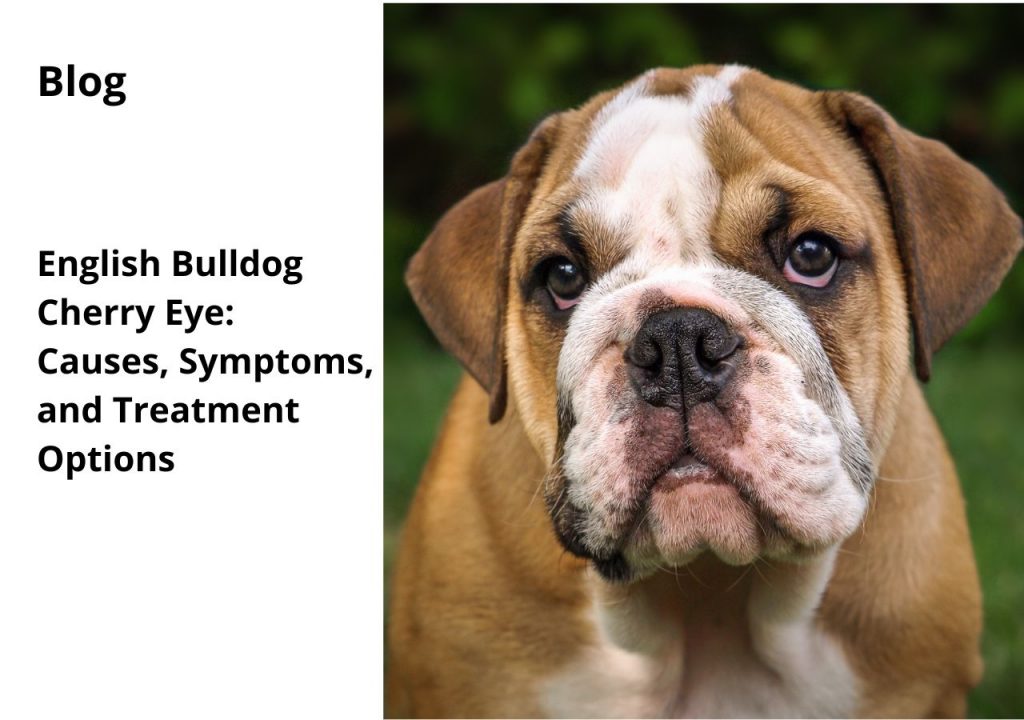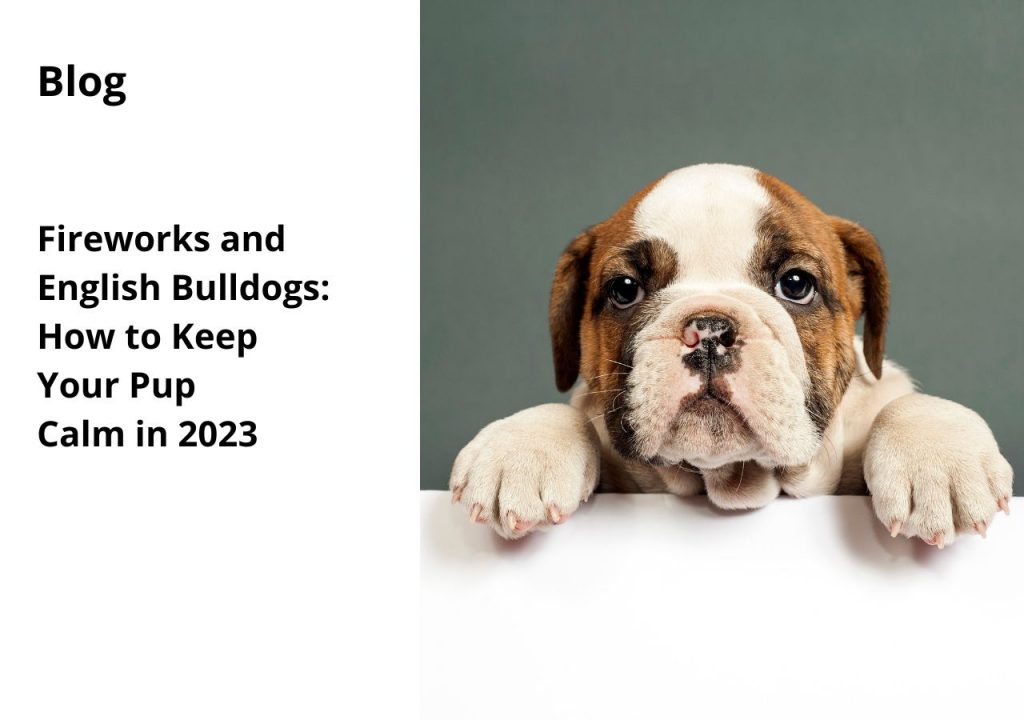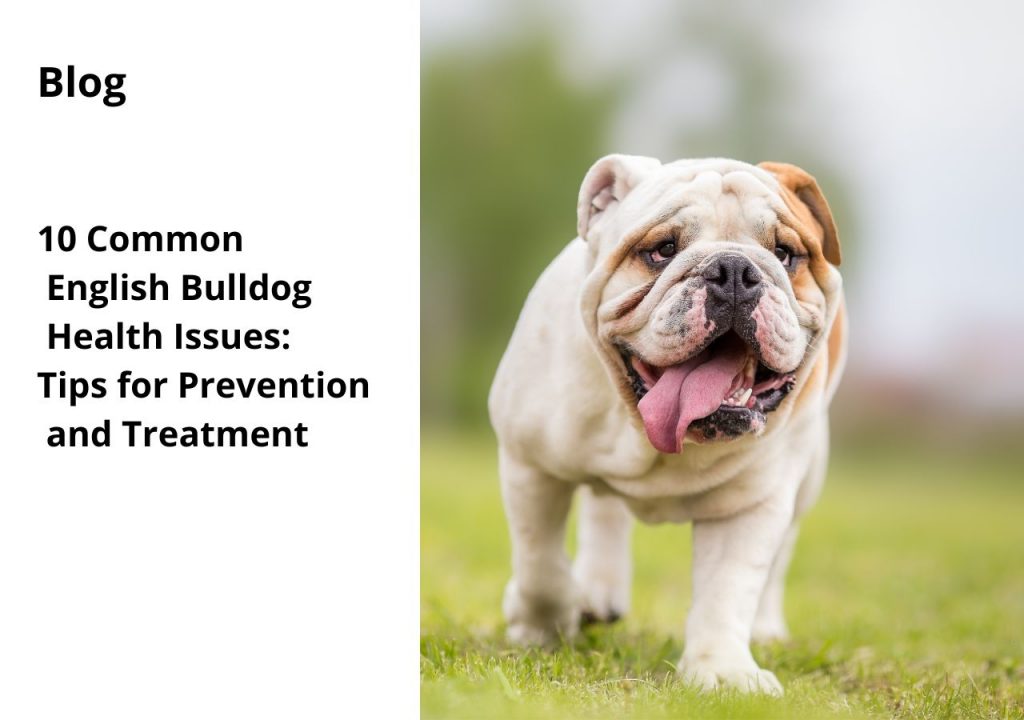Do you remember the last time you saw an English bulldog with a bright red and swollen eye that looked like a ripe cherry? As cute as it might seem, that’s not a fashion statement, but a serious health condition known as cherry eye. While this condition affects other breeds as well, it’s especially common in bulldogs due to their unique anatomy and genetics. In this essay, we’ll explore
- what cherry eye is,
- what causes it,
- how to diagnose and treat it,
- what it means for bulldog owners.
I. What causes cherry eye in English bulldogs?
Picture an English bulldog’s face as a car with big headlights and a short snout. Those headlights, or eyes, are quite exposed due to the shallow eye sockets and wrinkled skin that make them prone to infections and inflammations.
Furthermore, the third eyelid of a bulldog, which has a tear gland responsible for lubricating the eye, is prolapsed or everted, meaning it doesn’t retract properly and can get exposed to external irritants. As a result, the gland can become swollen, red, and infected, creating a noticeable bulge in the corner of the eye that looks like a cherry.
Additionally, some bulldogs may have a genetic predisposition to cherry eye due to a weaker connective tissue that can’t hold the gland in place. Other factors that may contribute to cherry eye include trauma, stress, allergies, or immune disorders. However, the primary cause of cherry eye in bulldogs is usually anatomical.
II. How can cherry eye be diagnosed and treated in English bulldogs?
If you suspect that your bulldog has cherry eye, you should take them to a veterinarian for an examination and diagnostic tests. The veterinarian will usually perform a physical exam and check for signs of cherry eye, such as redness, swelling, discharge, and exposure of the gland.
They may also use eye drops to see if the gland is functioning properly, and take blood tests or imaging if they suspect any underlying conditions. Based on the severity and duration of the cherry eye, the veterinarian will recommend either conservative management or surgical intervention. Conservative management involves using eye drops, massage, warm compresses, and antibiotics to reduce inflammation and infection and encourage the gland to retract.
Surgical intervention may involve gland replacement, tacking, or removal, depending on the type and location of the prolapse and the overall health of the dog. While surgery may be more invasive and costly than conservative management, it’s often the only effective way to treat severe or recurrent cherry eye.

III. What are the implications of cherry eye for English bulldog owners?
Cherry eye is not only a cosmetic issue, but also a health problem that can cause discomfort, pain, and even vision loss if left untreated. Therefore, it’s essential for bulldog owners to be aware of the signs of cherry eye and seek prompt veterinary advice if they notice any symptoms.
Ignoring cherry eye can lead to more complicated and costly treatments, such as repeated surgeries, medications, or even eye removal, which can have a negative impact on the dog’s quality of life and well-being.
Moreover, cherry eye can also be a sign of underlying health issues, such as allergies, infections, or immune disorders, that need to be addressed to prevent further complications.
Lastly, treating cherry eye can be a stressful and emotional experience for bulldog owners, as it may require frequent vet visits, medication administration, postoperative care, and lifestyle adjustments, such as avoiding strenuous activities or wearing a cone.
Therefore, it’s important for bulldog owners to educate themselves about cherry eye and its management, as well as to provide their dogs with a supportive and compassionate environment that fosters healing and recovery.
Can Bulldogs live with cherry eye?
Yes, bulldogs can live with cherry eye, but it’s important to address the condition as soon as possible to prevent complications and improve the dog’s quality of life. Cherry eye can cause discomfort, irritation, infection, and vision impairment if left untreated, and it can also be a sign of other health issues that need attention.
Therefore, bulldog owners should consult a veterinarian if they suspect that their dog has cherry eye, and follow their advice on the appropriate treatment options, such as surgery, medication, or other forms of therapy. With proper care and management, bulldogs with cherry eye can lead happy and healthy lives.
Can you fix cherry eye at home?
Treating cherry eye at home is not recommended, as it is a medical condition that requires professional attention and intervention. Cherry eye is caused by the prolapse of the third eyelid gland, which needs to be surgically repositioned or removed by a veterinarian in most cases.
Attempting to fix cherry eye at home can lead to further complications, such as infection, injury, or exacerbation of the condition, and can also delay proper treatment and recovery. Therefore, if you suspect that your dog has cherry eye, it’s important to consult a veterinarian as soon as possible and follow their advice on the appropriate treatment options.
Your vet may recommend a combination of surgery, medication, or other forms of therapy, depending on the severity and underlying causes of the condition. By seeking professional help, you can ensure the best outcome for your dog’s health and well-being.

What happens if cherry eye is left untreated?
If cherry eye is left untreated, it can lead to various complications that can affect the health and quality of life of the affected dog. Some of the potential consequences of untreated cherry eye include:
- Inflammation: Cherry eye can cause inflammation, redness, and swelling of the eye tissue, which can be painful and uncomfortable for the dog.
- .Infection: The exposed third eyelid gland can become infected by bacteria or other pathogens, which can lead to further inflammation, discharge, and discomfort.
- Vision impairment: Cherry eye can obstruct the dog’s vision and cause blurry or distorted vision, which can affect their mobility, safety, and quality of life.
- Corneal ulcers: If the dog rubs or scratches their eye due to irritation or discomfort, they can develop corneal ulcers, which are painful and can lead to vision loss if left untreated.
- Chronic conditions: If cherry eye is left untreated for a prolonged period, it can become chronic, which means that the gland loses its function and cannot be treated effectively with surgery or medication.
Therefore, it’s important to seek professional help if you suspect that your dog has cherry eye, and follow the recommended treatment options to prevent further complications and promote healing and recovery.



